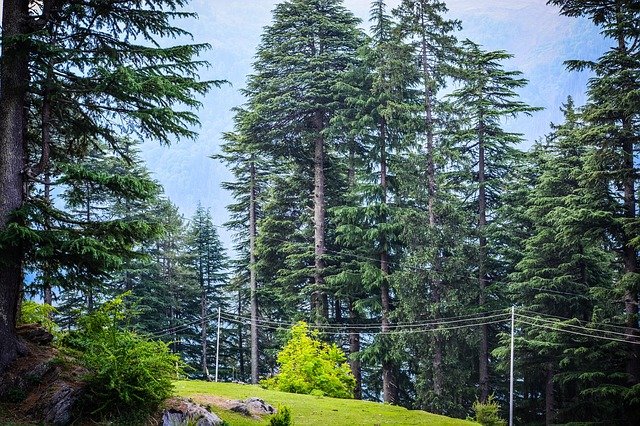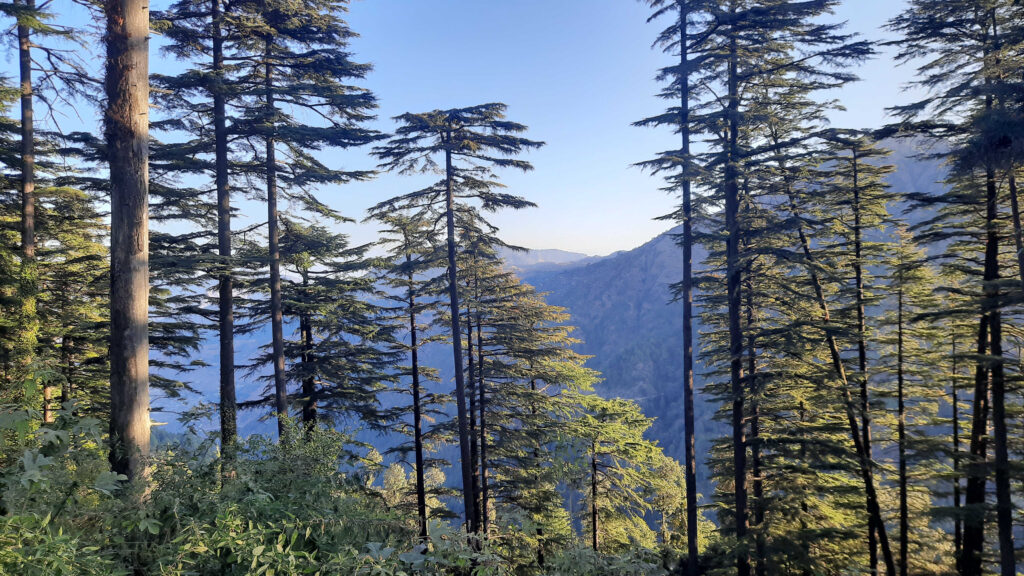Some people enjoy a scenery as a whole while some enjoy the details. As someone who focuses on the details, I began noticing the different tree species while exploring the Himalayas. In every ecosystem, there is a tree species that stands out because of its size, uniqueness, importance or simply its beauty. In the Western Himalayan ecosystem, the Deodar tree is that magnificent coniferous species that stops you in your track.
Some interesting facts about the Deodar tree
Appearance
Deodar scientifically known as Cedrus deodara is a West Himalayan Coniferous species which generally grows at an altitude of 1500 to 3000 metres. The tree can reach a height of 50 metres, sometimes even more. The crown of the deodar tree is conical and the leaves are needle-like occurring in a cluster of 25-30. The branches are horizontal and the trunk can be up to 3 metres in diameter.

Deodar tree In temples
Just like we find Banyan and peepal trees in the vicinity of a temple in the plains, deodar trees can generally be seen in the vicinity of a temple in the western Himalayas e.g. Jageshwar temple, Jakhoo temple, Hadimba temple all are surrounded by large deodar trees. Deodar literally means “Wood of the Gods“.
Deodar tree In Ayurveda
In Ayurveda, the deodar tree has many uses. The products derived from the deodar tree act as ingredients of various medicines. Some common ailments for which Deodar is used include respiratory problems like Asthma and common cough, obesity, and stomach related problems.
The Deodar forests
Among Uttarakhand and Himachal Pradesh, I found more Deodar forests in Himachal Pradesh. As I was going through the forest cover reports, I found the following data.
In Uttarakhand,
| Moist deodar forests | 1.49% of the total forest cover of Uttarakhand |
| Dry deodar forests | 0.73% of the total forest cover of Uttarakhand |
In Himachal Pradesh,
| Moist deodar forests | 10.34% of the total forest cover of Himachal Pradesh |
| Dry deodar forests | 1.12% of the total forest cover of Himachal Pradesh |

One of the main reasons for the increase in the number of wildfires in Uttarakhand is the disappearance of native tree species. During the British era, different commercial Pine species were planted that grow relatively faster, replacing native species like Deodar and Rhododendron. The forest department in Uttarakhand has proposed planting more Deodar trees as they are less prone to forest fires as compared to pines.
Deodar Wood
The wood of Deodar is highly durable, rot proof but has low strength. Cutting of Deodar is however banned in most areas.
Read more